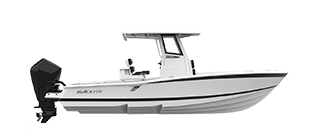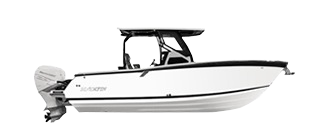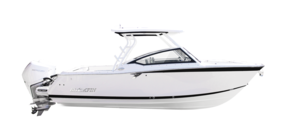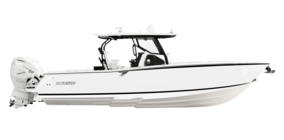
The sport of fishing is engraved in the DNA of every Blackfin. The legendary designs of these vessels are what set them apart from the rest. However, as the weather cools, fishing may seem more difficult than it is in the warmer months. This doesn’t mean you should put up the rod for the season, as there are plenty of techniques you can use to greatly increase your chances of landing some fish during the fall. Whether it be on your boat or on land, using these techniques can even assist in increasing your fishing skills along the way.
Sunny Areas
Just like us, fish seek warmth. Since they are cold-blooded animals, they look for the areas with the most sun to gather as much warmth as possible during the colder months. Usually, you can find them hiding in shrubs, roots, or banks near the shore. But when the weather gets colder, they are more likely to be seen sunbathing as many other animals do. This means they can be easier to spot and cast at, but they may be more hesitant to take bait as they are trying to conserve energy. A good cast, however, along with some patience, can certainly help you land a bite.
Fish for different species
If the fish you usually look for are the ones that slow down due to the cold, try to catch other species that are more active during these colder months. Some of the most popular fish to catch, such as bass and snook, are just some species that are less active when it gets colder. They are still viable catches but are just less abundant when the temperature drops. Other types of fish, however, such as pike or pickerel, are just some that feed more often when it gets chillier. If you're looking to catch a fish in saltwater, snapper and barracuda can be found more abundantly in the colder weather.
Use Larger Bait
When temperatures drop, fish try to conserve their energy. They are less likely to go after bait that they don’t feel is worthwhile. Using bigger bait can entice them to take a bite more likely than if it were a smaller bait. Make sure, however, that the bait isn’t too big and that the fish can’t swallow it. If you are using lures, go for a more colorful lure that can be easily spotted in the water. This way, the fish can identify that there is, in fact, an object in the water, and they may be more inclined to chase than if it were a dull color.
Travel around
If your spot isn’t seeing that many fish, try looking for new locations. Your spot may be ground for fish in the warmer months, but it is possible that they may disperse and hide as it gets colder. Looking for new areas to fish in can be very helpful as we get into the fall months. If your new spot sees results, you can even look out for when it gets warmer again, as fish may stick around that area if it is sufficient for them.
Also, if you are an experienced enough angler, you can even travel far out into locations where winter fishing is predominant. Ice fishing, for example, only has these wintery fish that sometimes live in deep water, so fishing around to even more unique spots can even yield you a new skill if you are dedicated enough.
Being able to fish at any time of year is a luxury that shouldn’t be taken for granted. While it is easy to hang up your rod for the season, there are plenty of opportunities to be able to get back outdoors and fish whenever you desire. Doing things like checking new spots, using bigger bait, and fishing in sunny areas are just some things you can do to increase your chances during the fall. Even with this drop in temperatures, it can be a new experience if you are usually only fishing in the spring and summer. Fishing is one of the best hobbies you can partake in, and knowing how to do it year-round just makes the hobby more special while expanding your knowledge of the sport at the same time.
Bookmark & Share
User Comments
Be the first to comment on this post below!
Previous Article
Next Article
Most Popular Articles
- The Blackfin 272CC ? Ranked Among The Very Best Fishing Boats of 2018!
- Blackfins new 33? debuts at the 2018 Fort Lauderdale International Boat Show!
- How to Acquire Your Boat Captain?s License in Florida
- Top 5 Tips for Buying Your First Fishing Boat
- What is the Best Time to Buy a Blackfin Fishing Boat?
- Center Console Boats Guide - Advantages & Benefits
- 5 Reasons Why Blackfin Boats are Every Angler?s Dream!
- 5 Tips & Tricks to Fishing with Your Kids















